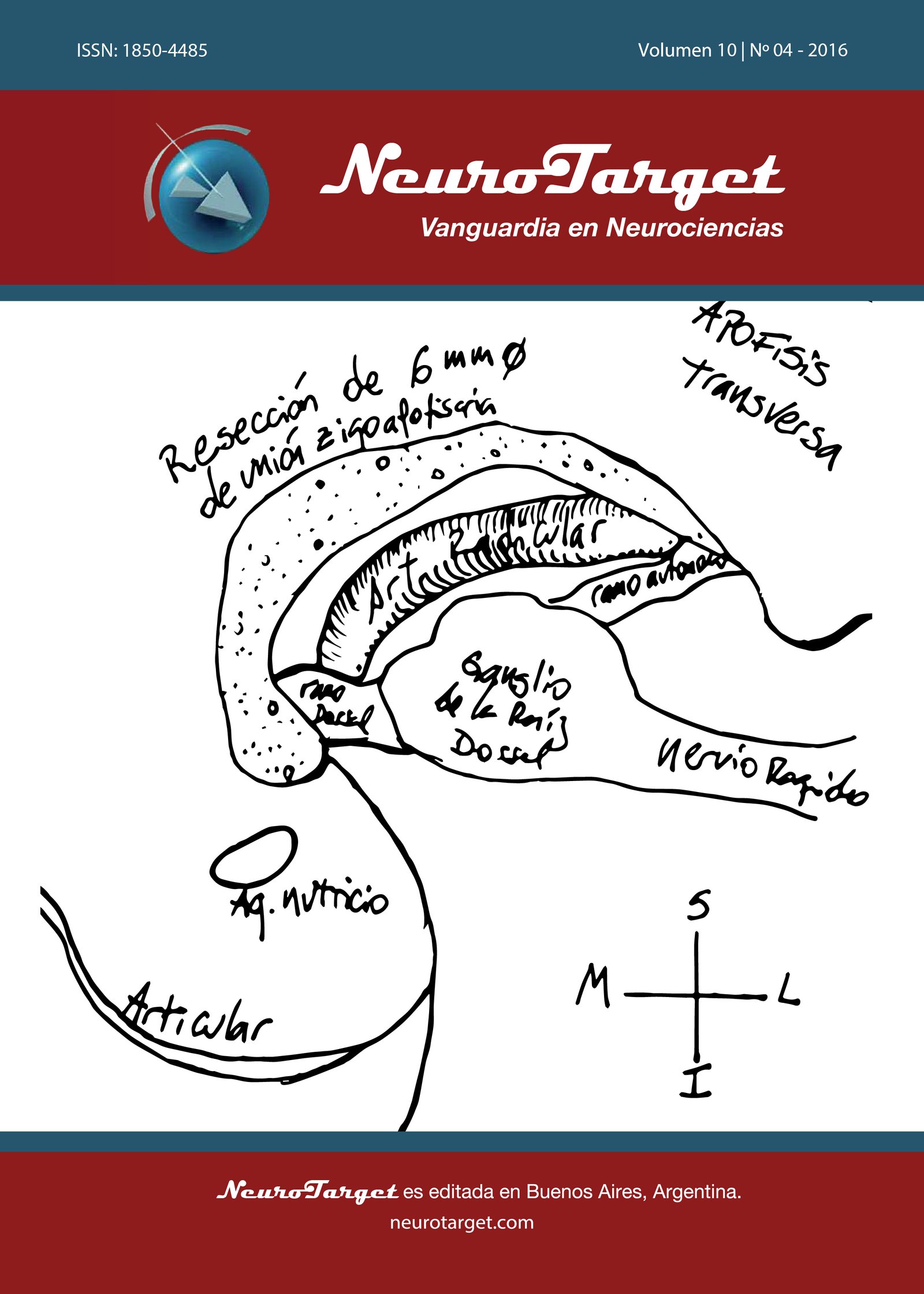Brief Pain Inventory (BPI) for Evaluation of Interventional Techniques in Back Pain Treatment .
Originally published in the journal El Dolor 62: 10-4; 2014
DOI:
https://doi.org/10.47924/neurotarget2016174Keywords:
Back pain, Steroid injections, Brief pain inventoryAbstract
The Brief Pain Inventory (BPI) is a scale to evaluate cancer and noncancer pain developed by The Pain Research Group of the University of Wisconsin, validated in Spanish. It includes evaluation of pain intensity, emotional and functional repercussion of pain. The aim of our study was to evaluate the effect of interventional pain procedures in back pain using the BPI. The study was performed in the Pain Clinic Service of the University Anesthesiolgy Department, Hospital de Clínicas, Montevideo, Uruguay, from October 2013 to March 2014. Sixty patients with back pain received epidural and facet joint steroid injections as part of a multimodal treatment approach. The BPI was performed before and 1 month after receiving the procedures. More than 50% of the patients had a successful response to procedures, defined this as a 50% improvement in BPI scale items, comparing control measures with baseline ones. The BPI was considered a useful tool to evaluate. The effects of interventional procedures in back pain treatment.
These effects were considered moderate in a short term follow-up.
Metrics
References
Borenstein D. Low Back Pain. In Pain Management, Steven D.Waldman MD. Chapter 82, 749-778, Volume 2. Ed. Saunders, El sevier.Philadelphia. 2007
Manchikanti L, Abdi S, Alturi S et al. An update of comprehensive evidencebased guidelines for interventional techniques in chronic spinal pain. Part II: guidance and recommendations. Pain Physician 2013, April 16:S49-S283
M. Alexandra Ferreira-Valente, José L. País Ribeiro, Mark P. Jensen, Contribución Adicional para la validación de la Versión portuguesa de la Escala de interferencia del Inventario Breve de Dolor. Revista Clínica y salud Vol.23, nro 1, 2012- pp. 89-96.
Melzack R. The McGill Pain Questionnaire: major properties and scoringmethods. Pain 1975; 1:277-99.
Daut RL, Cleeland Ch.S, Flanery RC. Development of the Wisconsin Brief Pain Questionnaire to Assess Pain in Cancer and other Diseases. Pain 1983;17:197-210.
Cleeland CS. Pain assessment in cancer. In: Osoba D, editor. Effect of cancer on quality of life. Boca Raton: CRC Press, 1991; p. 293-305.
Cleeland CS. Pain assessment: global use of the pain inventory. An Acad Med 1994;23:129-38.
Keller S, Bann C, Dodd Sh, Schein J, Mendoza T, Cleeland Ch. Validity of the Brief pain Inventory for use in documenting the outcomes of patients with noncancer pain. Clin J Pain 2004, September/October 20(5): 309-18
Manchikanti L, Cash KA, Pampati V, Falco FJE. Transforaminal epidural injections in chronic lumbar disc herniation: a randomized , doble-blind , active controlled trial. Pain Physician 2014; 17:E489-E501
Manchikanti L, Cash KA, Mc Manus C, Pampati V,Benyamin RM. A randomized double blind, active controlled trial of fluoroscopic lumbar interlaminar epidural injections in chronic axial or discogenic low back pain: results of two years follow-up. Pain Physician 2013; 16:E491-E5 04
Boswell MV, Colson JD, Sehgal N, Dunbar EE, Epter R. A systematic review of therapeutic facet joint interventions in chronic spinal pain. Pain Physician 2007; 10: 229-53
Cohen SP, Hayek, Semenov Y, et al. Epidural steroid injections, conservative treatment or combination treatment for cervical radicular pain. A multicenter, randomized, comparative-effectiveness study. Anesthesiology 2014; 121:1045-55
Rathmell JP. The proper role for epidural injection of corticosteroids. Anesthesiology 2014; 121:919-21
Downloads
Published
How to Cite
Issue
Section
License
Copyright (c) 2016 Marta Surbano, Mariano Antúnez, Ignacio Coutinho, Verónica Machado, Pablo Castromán

This work is licensed under a Creative Commons Attribution 4.0 International License.
The article is distributed under the Creative Commons Attribution 4.0 License. Unless otherwise stated, associated published material is distributed under the same licence.







